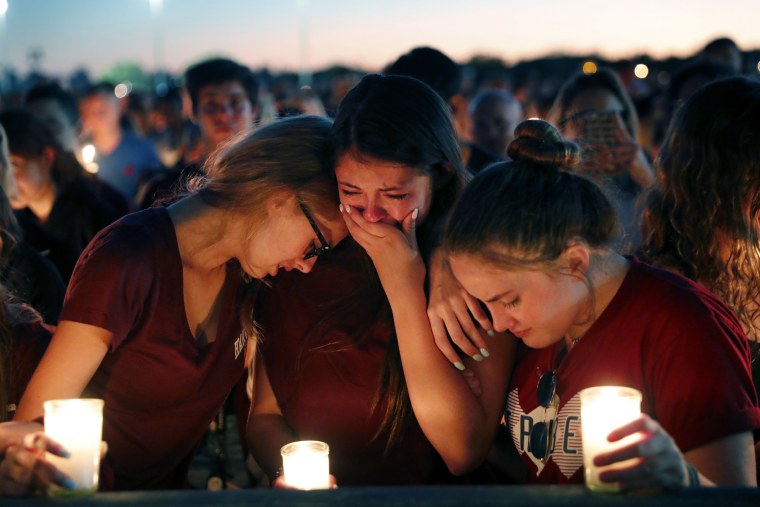WASHINGTON — The nation's schools should establish teams to evaluate all potential threats and encourage students to report troubling behavior, the U.S. Secret Service said Thursday in a new set of guidelines for preventing school violence.
Schools that set up a programs in advance for assessing threats, rather than trying to establish them in a crisis, do better at identifying students of concern, assessing their risk for violence and finding ways to reduce the threat, the guidebook said.
"The Marjory Stoneman Douglas High School shooting tragedy served as the impetus to go beyond our past work and go in depth regarding the how: how do we solve this epidemic?" said Secret Service Director R. D. Alles.
"The report truly is an operational guide, and I am confident that if embraced and followed by our nation's communities and schools, we will together reduce the occurrence of violence and the tragic loss of life."
For more than two decades, the agency's National Threat Assessment Center has studied incidents of serious school violence, including the only comprehensive program for interviewing every surviving student shooter.
"There is no profile of a student attacker," said the guide released Thursday. "There have been male and female attackers, high-achieving students with good grades, as well as poor performers. These acts of violence were committed by students who were loners and socially isolated, and those who were well-liked and popular."
The guide recommended that a school team for assessing threats include teachers, coaches, principals, guidance counselors, school resource officers and mental health professionals. It should gather to discuss every potential threat but should also meet regularly to learn how to function smoothly in a crisis.
Schools should also clearly define unacceptable student behavior, including threatening or engaging in violence, bullying and harassing others. Warning signs include marked declines in academic performance, increased absenteeism, withdrawal or isolation, and dramatic changes in behavior.
"The threshold for intervention should be relatively low so that teams can identify students in distress" before they become violent, the guide says.
The Secret Service report said students should be encouraged to report troubling behavior and allowed to do so anonymously, through online forms, e-mail, phone numbers or smartphone apps, such as the system used by Colorado's "Safe2Tell" program.
Students should be told that there's a big difference between snitching and seeking help, the guide said.
"Snitching is informing on someone for personal gain" but students should come forward "when they are worried about a friend who is struggling or when they are trying to keep someone from getting hurt."
Schools also need to train for how they respond to warning signs. "Removing a student from school does not eliminate the risk to the school community." A student who is suspended or expelled might become more isolated, which could increase the danger.
"Students may have a variety of motives that place them at risk for engaging in harmful behavior," the guide said.
It cited a 2016 murder-suicide at an Arizona high school in which a 15-year-old student shot her girlfriend. "In several notes found after the incident, the student explained that she carried out the attack because her girlfriend had recently confessed that she was contemplating ending their relationship," the guide says.
All students experience stress, losses, and setbacks and most young people are resilient. But for some, the pressures become overwhelming.
"Gather information on stressors the student is experiencing, how the student is coping with them, and whether there are supportive friends or family who can help the student overcome them."
